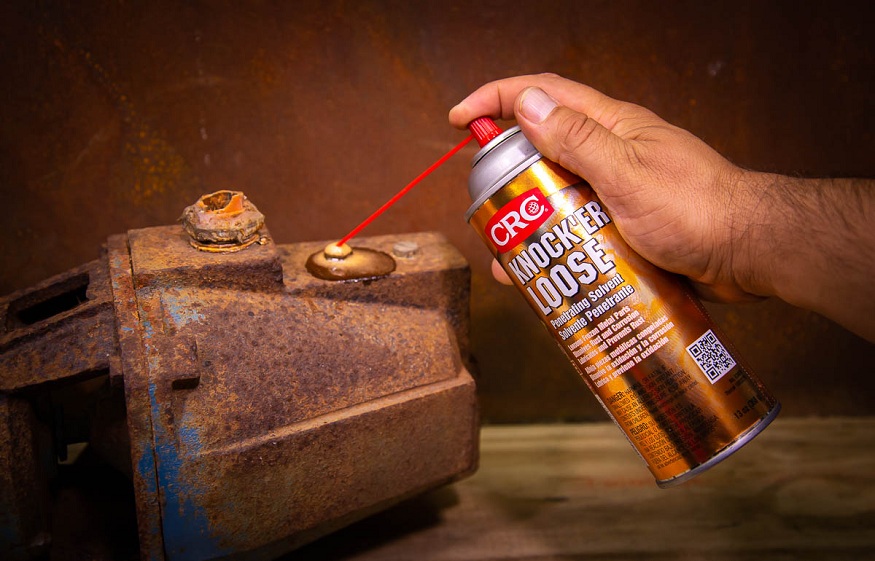 When rust sets its sights on your tools, vehicles, or machinery, it doesn’t hold back. Corrosion is an unyielding force of nature, eating away at metal surfaces and compromising the strength, precision, and longevity of critical components. But like any good battle, the opposition is growing stronger. Rust penetrating agents, often referred to as rust penetrants, are powerful solutions designed to fight back and win against rust’s relentless siege.
When rust sets its sights on your tools, vehicles, or machinery, it doesn’t hold back. Corrosion is an unyielding force of nature, eating away at metal surfaces and compromising the strength, precision, and longevity of critical components. But like any good battle, the opposition is growing stronger. Rust penetrating agents, often referred to as rust penetrants, are powerful solutions designed to fight back and win against rust’s relentless siege.
If you’ve wondered what makes these agents so effective or how to find the best rust penetrant for your situation, we’ve got you covered. This guide explores the science behind rust, the damage it causes, and the tools you can use to stop it in its tracks.
What is Rust? The Silent Metal Killer
Rust is a type of corrosion that occurs when iron, oxygen, and moisture interact in a specific way. This chemical reaction produces iron oxide, better known as rust. Over time, rust weakens metal, causes discoloration, and, if left untreated, can entirely destroy the material.
To better understand rust’s severity, consider this:
- A vehicle riddled with rust can compromise passenger safety by weakening structural integrity.
- Machinery suffering rust-related wear and tear operates less efficiently, increasing costs and operational risks.
- For tools, rust not only weakens metal but also obstructs functionality and shortens their lifespan.
This is why treating rust early and effectively is crucial—and this is where rust penetrants shine as true heroes.
How Do Rust Penetrants Work?
Rust penetrants are specialty lubricants designed to seep into the smallest cracks and crevices of corroded surfaces. Unlike standard lubricants, which simply coat the surface, penetrants are formulated to loosen rust particles that have bound to the underlying metal.
Here’s how they work:
1. Penetration
When applied, rust penetrants seep deep into rusted threads, fasteners, or surfaces. The low viscosity allows them to cut through rust buildup and target areas other treatments can’t reach.
2. Lubrication
Once rust is loosened, rust penetrants lubricate the affected area, allowing for parts to be separated, bolts to be unscrewed, or surfaces to regain their functionality.
3. Longevity
Many high-quality penetrants also provide temporary protection against future rust formation, giving you extra time to address the root cause of rust exposure.
For anyone dealing with rust, finding the best rust penetrating spray is key to making quick, effective repairs possible.
Benefits of Using Rust Penetrating Agents
Why should you use a rust penetrant? Here’s what makes them invaluable in the fight against corrosion:
-
Ease of Use
Rust penetrants are simple to apply—most come in aerosol spray cans or easy-to-pour containers, allowing for quick and targeted application.
-
Time-Saving
Instead of manually forcing bolts, screws, or machinery free, these sprays do the hard work for you by dissolving rust bonds.
-
Versatility
Use them on anything from home tools and vehicles to industrial machinery, reducing rust-related headaches across the board.
-
Cost-Efficient
Treating rust early with a penetrant can save you the steep costs of replacing or repairing corroded equipment.
Choosing the Best Rust Penetrant for Your Needs
Not all rust penetrants are created equal. The market is filled with different options, and choosing the right one can be overwhelming. Here are factors to consider when finding the best rust penetrating spray for your needs:
1. Depth of Rust Penetration
Some penetrants excel in breaking through heavy rust buildup, while others are better suited for light to moderate corrosion. Pick a penetrant that matches the severity of the rust you’re dealing with.
2. Fast Acting vs. Long-Term Protection
If you’re in a hurry to complete repairs, opt for a fast-acting formula. On the other hand, if you need lasting protection, choose a rust penetrant that offers corrosion-resistance properties.
3. Application Method
Prefer sprays for their ease of use and ability to reach tight spaces, or select liquid forms if you need to soak small parts for thorough rust removal.
4. Compatibility
Check that the product is safe to use on the surfaces you’re treating. Some rust penetrants are designed for metals only, while others are suitable for rubber, plastic, and painted surfaces as well.
5. Brand Reputation
Stick with brands known for high-performing rust penetrants, such as WD-40, PB B’laster, and Liqui Moly, to ensure quality.
Step-by-Step Guide to Using a Rust Penetrant
Using a rust penetrant effectively requires proper application. Follow these steps:
1. Assess the Damage:
Identify the exact areas affected by rust and determine if the underlying material is compromised.
2. Clean the Surface:
Remove dirt, grease, or loose rust so the penetrant can work more effectively.
3. Apply the Rust Penetrant:
Spray or pour the solution directly onto the rusted surface or threads. Be generous and ensure complete coverage.
4. Allow It to Work:
Most rust penetrants require 10–15 minutes to penetrate and loosen rust. For stubborn rust, a longer waiting period or multiple applications may be necessary.
5. Loosen or Dismantle Parts:
Attempt to unscrew bolts, separate parts, or move components after letting the solution work in. Reapply as needed.
6. Wipe and Protect:
Once repairs are completed, clean off excess penetrant and consider applying a rust-protection product.
Rust Prevention Tips for the Long Run
While rust penetrants are effective for treating damage, prevention is always better than a cure. Here’s how to minimize future rust risks:
-
Store Equipment Properly
Keep tools, vehicles, and machinery in a dry, covered area to reduce exposure to moisture and air.
-
Regular Maintenance
Apply rust inhibitors or corrosion-resistant coatings to high-risk surfaces.
-
Inspect Frequently
Periodically check for any signs of rust, as early detection can save you time and money.
Never Lose the Battle Against Rust
The fight against rust may be challenging, but it’s one you don’t have to lose. Armed with the best rust penetrant, you can restore your tools, equipment, and machinery to their former glory without breaking the bank. Remember, the key lies in choosing the right product and acting quickly before rust worsens.
Don’t wait for rust to take over—get the right penetrant into your toolkit today and reclaim control. With the right solutions, rust doesn’t stand a chance!









